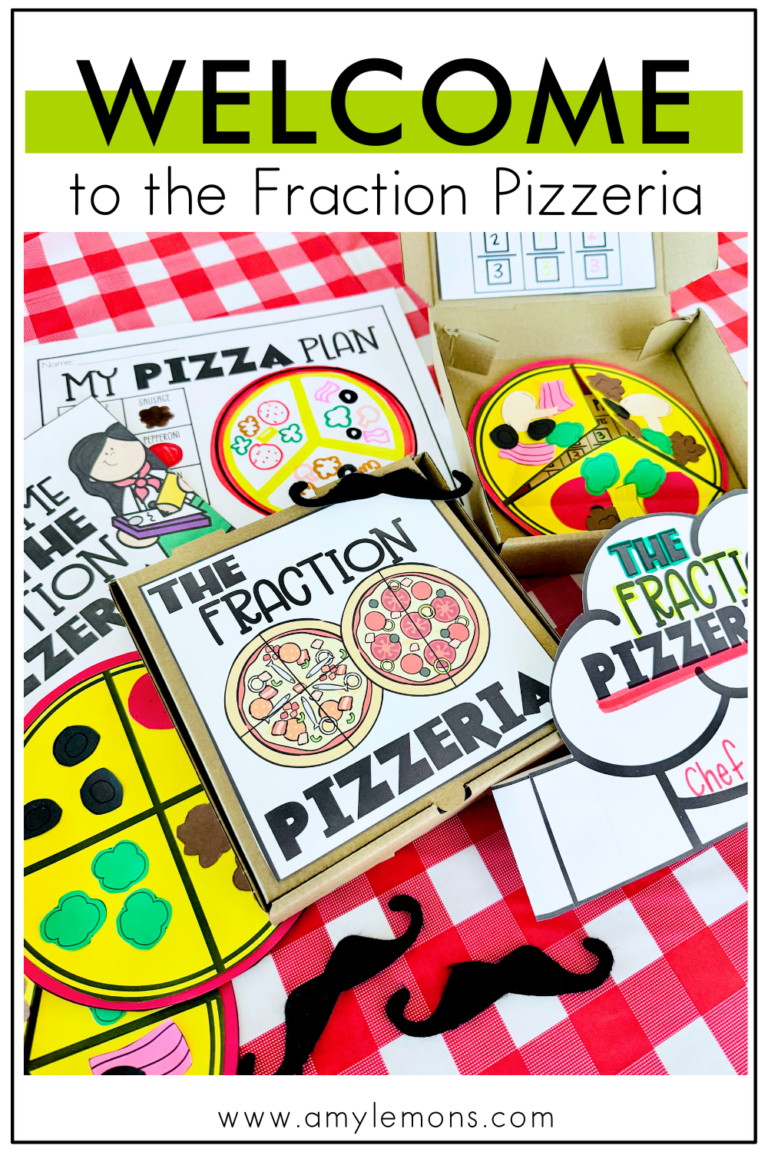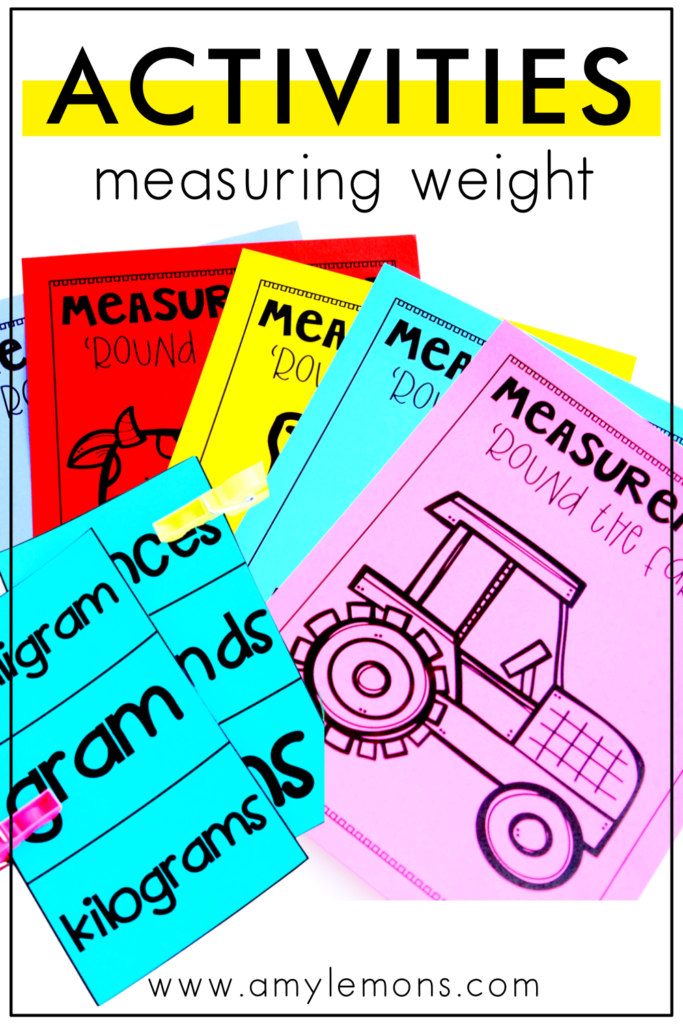

Weight, mass, capacity, tons, pounds, grams, etc. Do we really need THAT many units of measurement? Probably not, but they are here and we have to teach the little ones what they are and how to use them. Talk about stress!
Well, let’s start by tackling one of those things – weight. I’ll be sharing activities for teaching measuring weight that are unique, and ensuring your students actually pay attention. But first, here are a few ways to make explaining the differences in all things weight, mass, and capacity measurement a little simpler for your students!
Explaining the difference between weight, mass, and capacity to kids can be a bit challenging, but here’s a good attempt at making it as simple as possible.
Weight: Weight is the measure of how heavy an object is. It can be measured in units such as pounds, ounces, and grams. For example, when we weigh a watermelon, we are measuring how heavy it is.
Mass: Mass is the amount of matter in an object. It is a measure of how much stuff an object is made of. It can be measured in units such as kilograms and grams. For example, if we compare two watermelons of the same size, the one that has more mass (AKA more stuff inside) will be heavier.
Capacity: Capacity is the measure of how much liquid a container can hold. It is measured in units such as liters and milliliters. For example, if we want to know how much water a glass can hold, we are measuring its capacity.
One of the hardest ideas to grasp is that, while weight and mass are related, they are not the same thing, and capacity is a completely different measurement. So, you will want to be very careful not to intermesh them too heavily in your lesson plans.
Allow them to stand on their own!
Okay, now that that is out of the way. Let’s talk about some strategies for teaching measuring weight.
Teaching measuring weight to elementary students can be a challenging task, but it can also be an exciting opportunity to engage students in hands-on activities for measuring weight and help them develop their mathematical skills. Here are some strategies that can help make the process of teaching and measuring weight more effective and engaging for elementary students:
Overall, the key to teaching measuring weight to elementary students is to make learning fun, engaging, and interactive. By applying these strategies, you’ll be doing just that plus deepening comprehension!
Now, I’ve shared some effective strategies for teaching measuring weight. I’d like to share actual measuring weight activities that will help you touch on each one of those strategies.
These weighing activities are hands-on, effective, out-of-the-box ideas that will actually make a difference in how your students respond to the lesson and grasp this math skill.
{All of the activities I’m sharing with you are from our 3rd Grade Magic of Math Resource for Time, Capacity, and Mass which can be found on my TPT shop.}
Visual representation should be the first tool used to introduce the concept of measuring weight to your students. Posters and anchor charts make the perfect visuals for displaying what weight is, how to measure it, and the units used.
However, you can go beyond simply displaying these measuring weight visuals around the classroom by including them in a weight measurement activity.
In Measurement Round the Farm, you will place your measurement posters around the floor in a circle and play a round of musical math! For this measuring weight activity, the posters will have various farm symbols like cows, tractors, etc.
Much like musical chairs, you will play music as students walk around the poster circle. When the music stops, whichever poster the student lands on they must provide the correct unit of measurement using unit posters or cards. You can choose to do two rounds using customary units and metric units.
For example, if a student lands on a cow then they will choose a unit card of pounds. If they land on a truck, then they may use tons or kilograms.
This is a great way to make your visuals an integral part of the weight measurement lesson!
Using real-life examples is one of the most effective ways to show students how to compare the weight of objects and get hands-on experience with measuring them on their own.
Well, I have a creative way for you to practice weight measurement using a balancing STEM activity!
In Making a Balance, you will be explaining to students how the weight of objects can be compared with a balance. For the project, you’ll demonstrate what this looks like by creating a balance using a hanger, some string, plastic condiment cups, and various familiar objects!
Feel free to give your students the materials to create their own balance in a fun STEM challenge or make it a class project as you walk them through it.
When you’re done, you should have something that looks similar to this.
So simple right? And definitely classroom friendly but also, an amazing activity for measuring weight at home, too!
Now, I don’t know about you, but using food in the classroom has always been a hit with students! So for this balancing act, I like to use nerds or some small candy as the controlled item. Students can use the nerds as the constant comparison.
They can compare the nerds with other candy or classroom objects that are lightweight (e.g., paper clips, erasers, etc.)
Then, this is how they would complete the weight comparison activity.
You can continue this activity using various items that the students encounter around the classroom each day!
Of course, a stem project for comparing weight certainly qualifies as a hands-on activity, but there are so many other cool ways to get your students learning through play!
My absolute favorite way to have students practice any math skill is through partner or group games! Students learning from each other is such an effective way to drive comprehension and give teachers a little help with their lessons.
Plus, it encourages student participation, classroom community, cooperation, team building, and so many other important aspects of the classroom.
I want to share three ideas with you that we’ve used in our Magic of Math curriculum.
I am almost 100% certain you’ve never seen this weight-measuring activity before! It’s a creative way for students to learn about objects and their units of measurement for weight using a version of charades!
The point of this activity is for students to practice identifying the appropriate unit needed to measure the weight of various objects.
To play, students will break off into pairs. Each pair should be given a set of cards displaying the objects they will be finding units for, a recording sheet for their answers, and a headband. You can be as creative as you need to be for those headbands!
Here’s how students play the game with each partner taking turns for each role.
Students can play several rounds of this game to practice identifying units of measurement for weight.
Talking grams can get complicated even for the most experienced of us. All those grams start to sort of roll into each other. So, how do we teach students to tell the difference?
With a fun game of Gram Dunk, of course! This activity focuses specifically on grams and what type of objects we would use them for so that students can get in-depth knowledge of this tricky unit of measurement.
In this measuring weight activity, students will partner up to play! You’ll need a set of picture cards that have various objects on them, small condiment cups (3 for each pair), poms, and a recording sheet!
For the goals, you’ll have a set of goal-shaped cards with a kilogram, gram, and milligram! Students will “dunk” their “balls” into the correct “goal” for measurement of the objects they pull from the card deck. Here’s a breakdown:
If they finish early, they may select random objects on their own and determine which object they would use to measure the mass and continue to play the game until the time is up. This is a great way to incorporate student choice, which makes this activity that much more engaging!
Solving word problems will never be the same again after students go on this Race to the Carnival!
This is a partner board game that includes students solving word problems to review what they’ve learned about measuring weight! This activity for measuring weight requires critical thinking and problem-solving skills but in a non-stressful way.
Students will be adding, subtracting, and dividing various units for weight measurement in a cooperative format so they get a chance to help each other.
To begin, you’ll need the Race to the Carnival game board, game pieces (like legos or erasers), and a set of word problems (in ticket form!)
Here’s how it is played. Check out the image above for how this looks in practice!
Word problems can be challenging so having students work together is one of the most effective ways to encourage them to work hard and try their best!
If you’re in the middle of planning and searching for activities for teaching measuring weight, then you should consider any of these mentioned above.
You can find the complete set plus many more where that came from in our 3rd Grade Magic of Math Resource for Time, Capacity, and Mass.

Hey, y’all! My name is Amy Lemons and I am passionate about providing students with both engaging and effective standards-based Math and ELA lessons.

Sample a day of Rooted in Reading with these lesson plans and activities for Reading Comprehension, Vocabulary, and Grammar!